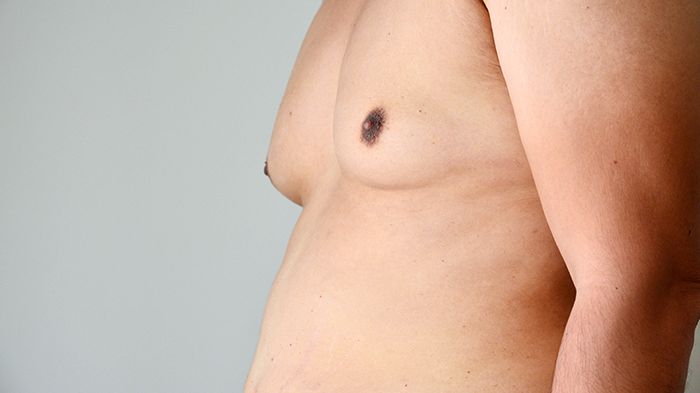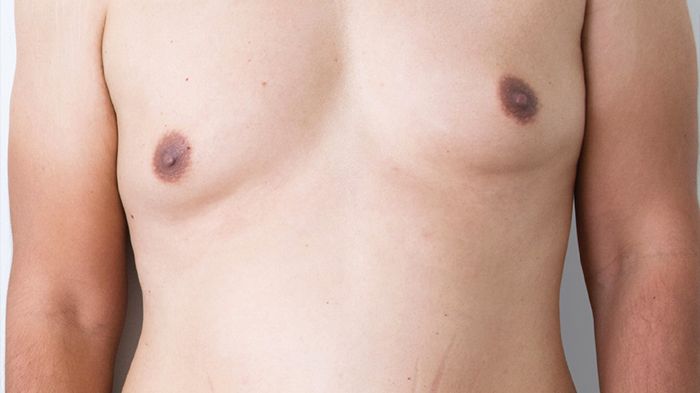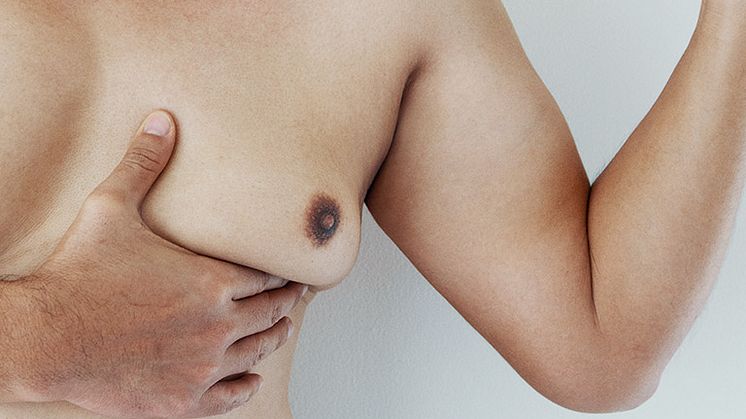
Blog post -
Man Boobs: A Real Problem That You Should Consider Surgery For?
If you have gynecomastia — the medical term for “man boobs” — you’re far from alone. In fact, an estimated 30% of men experience gynecomastia in their lifetime, according to a 2014 study. In Singapore, Dr Ivan Puah, a liposuction and body sculpting doctor at Amaris B Clinic, shares that it’s pretty common in Singapore too.
“Gynecomastia is frequent during three phases in the age distribution curve: the neonatal period, pubertal period and adulthood”, he shares, adding: ” The prevalence of asymptomatic gynecomastia in neonates is estimated to be between 60 and 90%. The second physiological peak of occurrence is at puberty between the ages of 10 and 16 years.”
In fact, approximately 50–60% of adolescents have been estimated to have gynecomastia. Fortunately, most cases in the above two groups regress spontaneously, but then it seems to return, with the last peak seen in men 50–85 years of age, with a reported prevalence of up to 70%, reveals Dr Puah.
But even though gynecomastia is common, many men still find it embarrassing — particularly when you’re more likely to hit the beach or poolside BBQ.
According to a new report from the American Society of Plastic Surgeons, male breast reduction surgeries are on the rise among men and have increased by 30% over the past five years, more than any other plastic surgery procedure for men.

Why are men having more plastic surgery?
In general, cosmetic surgery among men is on the rise. According to the ASPS report, more than 1.3 million men went under the knife in 2017 — an overall 30% increase from the number of men who got work done in 2000.
Guys seem to be most interested in body contouring procedures: liposuction procedures have increased by 23%, and tummy tucks increased by 12%. And surprisingly, men between the ages of 20 and 29 account for 35% of male cosmetic surgeries, says Jeffrey Janis, MD, president of the American Society of Plastic Surgeons. “More men in their younger years are taking up a larger share of the total number of procedures,” Janis told MensHealth.com.
The rising rates of plastic surgery among men could have something to do with our social media-obsessed culture, which puts equal pressure on men and women to look young and fit. It could also stem from the increasing lack of stigma surrounding plastic surgery in general, says Janis.
“As more men talk about it amongst themselves and with their significant others, it becomes less stigmatized,” says Janis. “When you see your colleagues, friends and family looking better, feeling better, and talking about their results, it can open the door to you envisioning how you can benefit from the procedure.”
In Singapore, the scene doesn’t seem much different either, according to Dr Puah. "Body contouring procedures amongst Singaporean guys include ‘man-boob’ reduction, tummy contouring for abdominal ‘six-packs’, waist or ‘love-handles’ contouring, and double chin reduction,” he shares, which seems to reflect some of the stubborn and challenging areas that guys find hard to shape up despite working out.
And Bro-tox isn’t uncommon in Singapore either- men are also asking for Anti-wrinkle Injection (BoNTA) to fix facial wrinkles such as crow’s feet, frown lines or forehead lines, and treatment for “square-jaws” and facial slimming, adds Dr Puah.
The stigma locally does seem to be wearing off, with local guys sharing their results openly with their spouses, girlfriends and close friends, and also when they are more well-informed about aesthetic trends and treatment options in Singapore.

What is gynecomastia?
While men's plastic surgery rates are increasing across the board, male breast reduction surgeries have had the most significant spike, rising by 30% over the past five years. Janis says this could be due to increased diagnoses in recent years of gynecomastia.
“Gynecomastia is defined as a benign proliferation of glandular tissue of the breast in males, resulting in a concentric enlargement of one or both breasts. The most common cause of gynecomastia is physiological, with no specific identifiable factor. However, it can also be caused by hormone imbalance, drugs and medical illness such as tumours, liver disorders and others,” Dr Puah shares.
In some cases, taking prescription medication can help reduce the appearance of breasts. But gynecomastia surgery is the permanent way to treat the condition.
That’s why many guys are opting for the procedure, says Marwan Khalifeh, a D.C.-area cosmetic surgeon.
“They want to migrate toward what’s considered the ideal male figure, which does not include overdeveloped breasts,” Khalifeh told the Chicago Tribune earlier this year.
What is breast reduction surgery?
Male breast reduction surgery is a day-surgery procedure. It is typically performed with local anaesthesia. It involves removing enlarged glandular and excess fat tissues.
Like any surgical procedure, male breast reduction surgery doesn’t come without risks, such as bleeding, infection, or an adverse reaction to anaesthesia; patients may also have reduced nipple sensitivity and scarring after the surgery.
But Janis says male breast reduction surgery is among the more permanent ways to treat gynecomastia, as well as the most successful: according to a 2017 study in the Annals of Plastic Surgery, which followed a group of more than 300 men who had been surgically operated on for gynecomastia, 100% of patients in the study reported no recurrence of gynecomastia and had high levels of satisfaction post-surgery.
What to do if you’re considering gynecomastia surgery
If you have gynecomastia and are thinking about going under the knife for breast reduction surgery or any other type of procedure, do your research.





